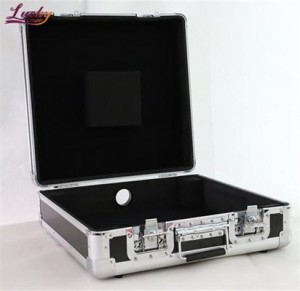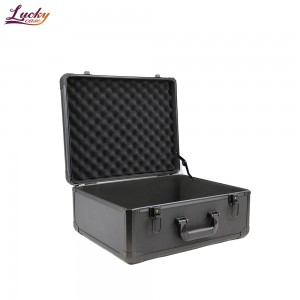
Microphone Case
Aluminum Microphone Case with Compartment
♠ Product Attributes of Vinyl Record Case
|
Product Name: |
Aluminum Microphone Case |
|
Dimension: |
We provide comprehensive and customizable services to meet your diverse needs |
|
Color: |
Black / Silver / Customized |
|
Materials: |
Aluminum + ABS panel + Hardware + DIY foam |
|
Logo: |
Available for silk-screen logo / emboss logo / laser logo |
|
MOQ: |
200pcs( Negotiable ) |
|
Sample Time: |
7-15 days |
|
Production Time: |
4 weeks after confirmed the order |
♠ Product Details of Aluminum Microphone Case
EVA Foam
The EVA foam is customized to fit the shape of the microphone. Each microphone can be tightly embedded in the corresponding foam groove to achieve a stable fixing effect. When the case is moved or shaken, the microphone will not roll or shift randomly in the case, and will always remain in a relatively stable position. This precise fit and fixation prevents the microphones from colliding and rubbing against each other, causing wear and tear on the appearance, and ensures that the microphones are always stored safely and orderly in the case. EVA foam has good elasticity and flexibility, and can deform quickly when impacted by external forces, absorbing and dispersing impact forces. It can maximize the protection of the performance and quality of the microphone and reduce the risk of equipment failure due to external forces during transportation.
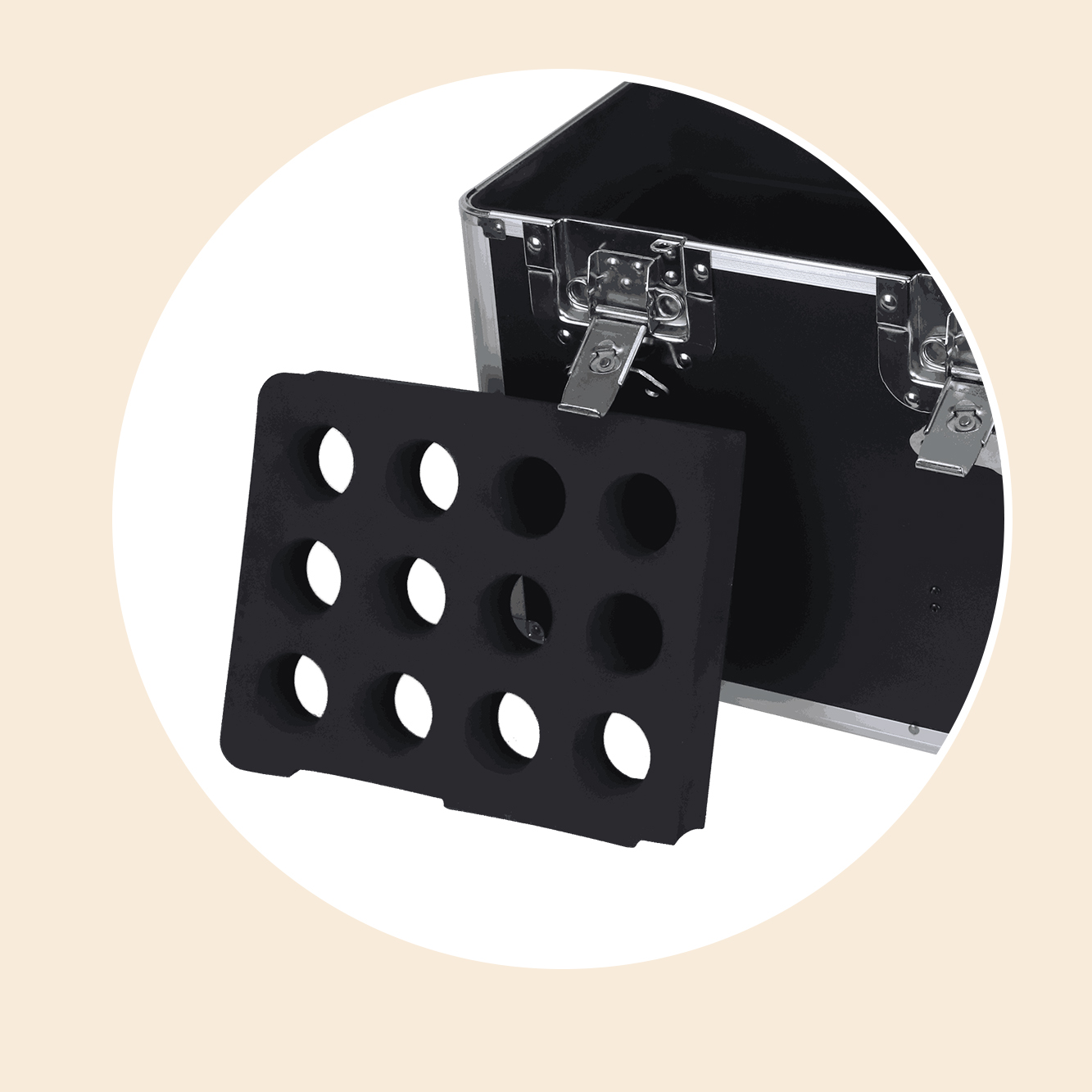
Butterfly Lock
One of the main functions of the butterfly lock is to provide security for the mic case. In performances, conferences and other occasions, the microphones and other audio equipment in the case are often valuable. The butterfly lock uses solid metal material and a delicate lock structure to tightly close the case. This effectively prevents the case from being opened at will when unattended, prevents the internal equipment from being stolen, and protects the user's property safety. The butterfly lock makes the case cover and the case body fit tightly together. This tight closure can effectively prevent dust, moisture and other adverse external factors from entering the case. The good sealing maintained by the butterfly lock can create a relatively clean and dry storage environment for the internal equipment, ensuring the stable performance of equipment such as microphones. The butterfly lock can firmly connect the case cover and the case body together to enhance the stability of the overall structure of the case. It can prevent the case cover from being accidentally opened during transportation and prevent the internal equipment from falling and being damaged.
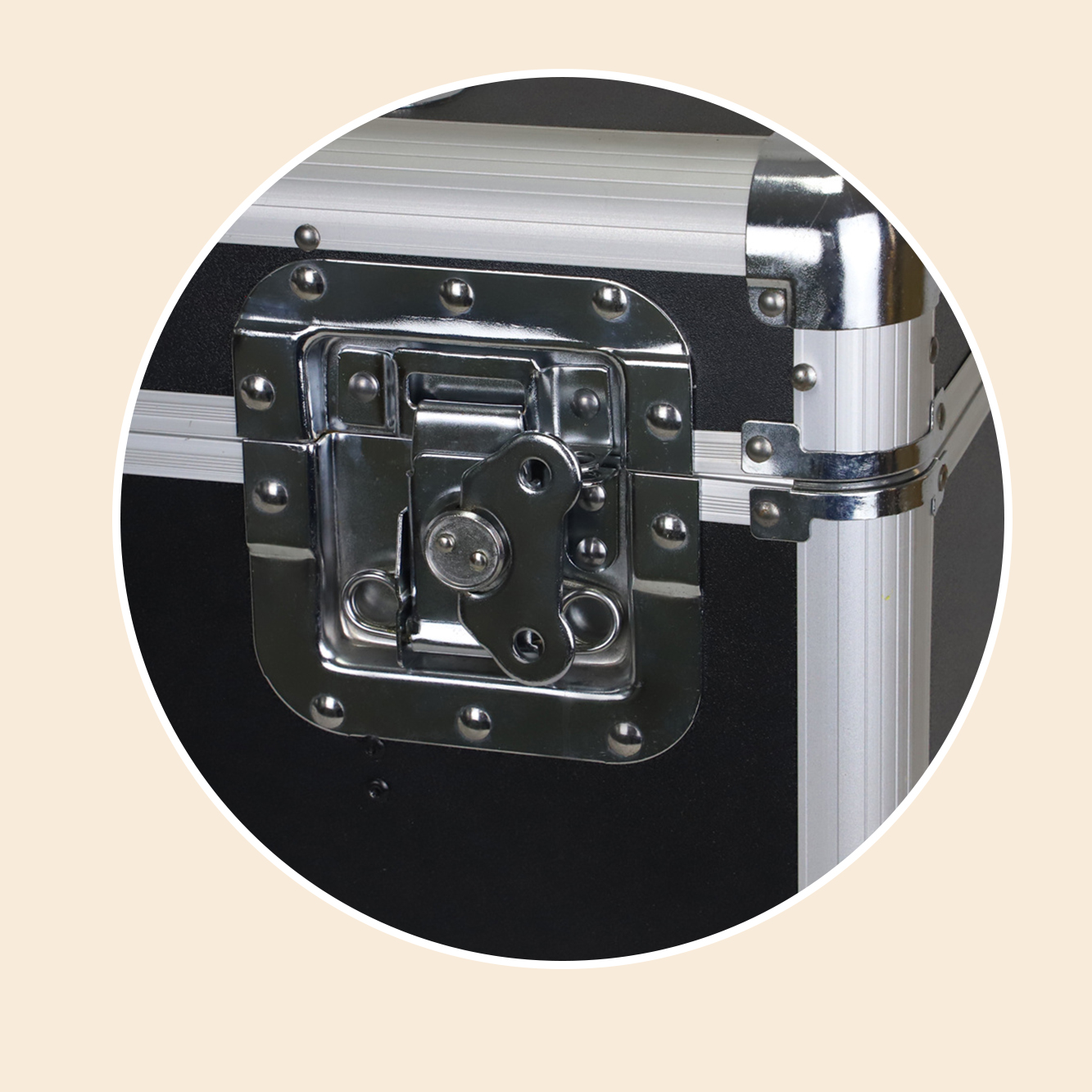
Foot Pads
The foot pads can prevent the microphone case from being worn. When the case is placed on the ground or other surfaces, if there are no foot pads, the bottom of the microphone case will directly contact the ground. In daily use, there may be sand and gravel on the ground. In the process of dragging the case, the bottom of the case is very easy to be scratched and worn. The foot pads act as buffers and isolates, which can effectively avoid direct friction between the case and the rough ground, greatly extending the service life of the case. The foot pads can also enhance the placement stability. When the case is placed on the ground, the foot pads can generate greater friction with the ground, thereby preventing the case from sliding at will. If the case does not have good stability, it is easy to be knocked over and moved, causing damage to internal microphones and other equipment. With the friction provided by the foot pads, the case can be firmly fixed in one place to ensure the safety of the equipment.
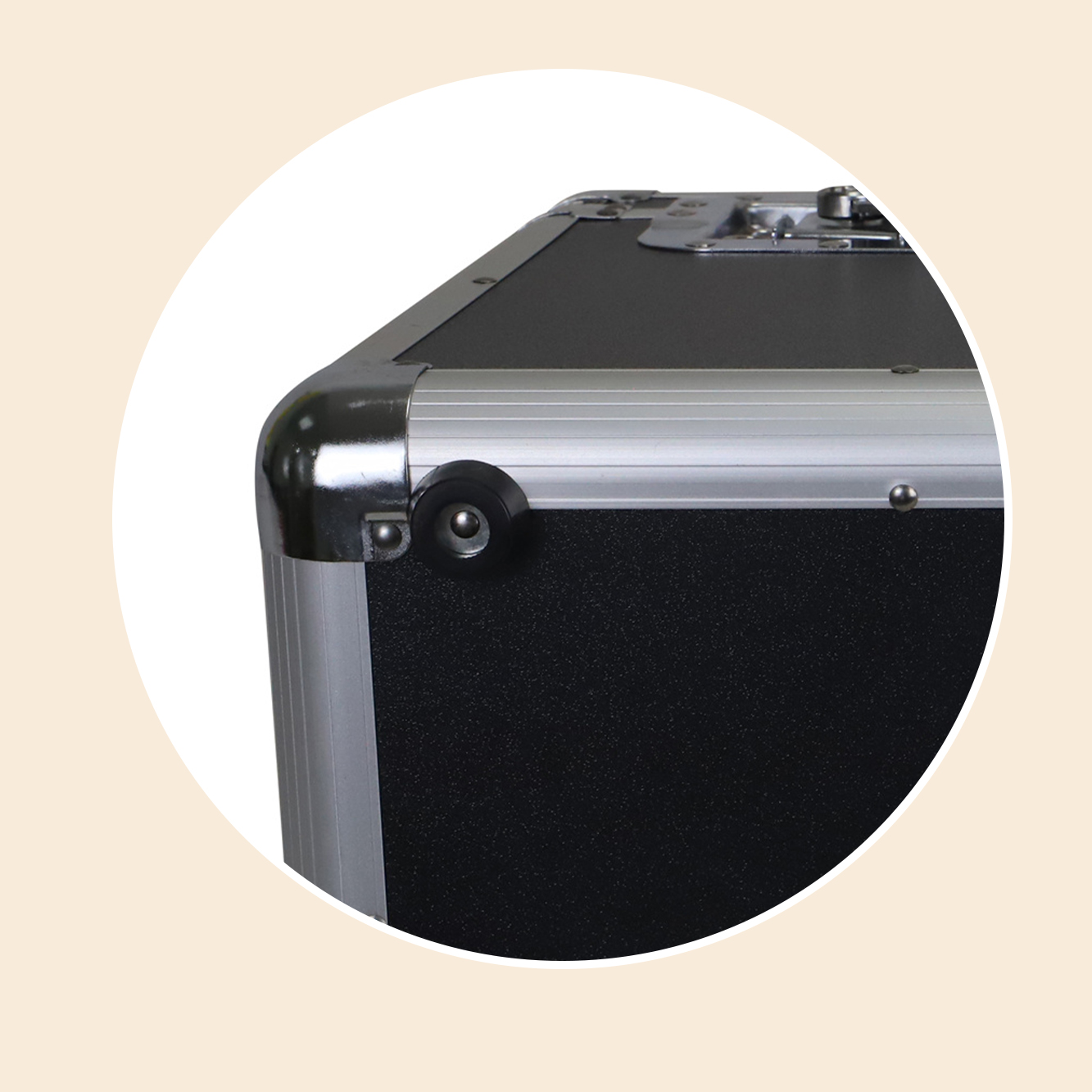
Hinge
The hinge is the core component that enables the case to be opened and closed freely. Through the connection of the hinge, the case lid can be opened and closed smoothly. This flexible opening and closing method greatly improves the convenience of the case. The hinge has a strong load-bearing capacity and connection strength, and can firmly connect the case lid to the case body. During the use of the case, whether it is in the open state or the closed state, the hinge can maintain the stability of the case structure. When the case lid is opened, the hinge can keep it at a fixed angle, and it will not shake or fall at will, which is convenient for users to take and place the equipment. The hinge has good wear resistance, corrosion resistance and oxidation resistance. In the process of long-term and frequent use, the hinge can withstand repeated opening and closing actions, and is not prone to wear, deformation, rust and other problems. This not only ensures that the case can be used normally for a long time, but also reduces the frequency of repair or replacement due to hinge damage, reduces the cost of use, and extends the service life of the entire case, providing users with reliable long-term use guarantee.
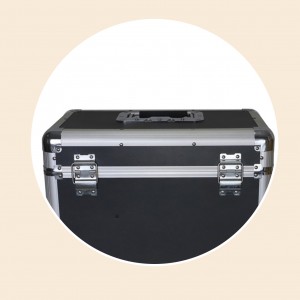
♠ Production Process of Aluminum Microphone Case
1.Cutting Board
Cut the aluminum alloy sheet into the required size and shape. This requires the use of high-precision cutting equipment to ensure that the cut sheet is accurate in size and consistent in shape.
2.Cutting Aluminum
In this step, aluminum profiles (such as parts for connection and support) are cut into appropriate lengths and shapes. This also requires high-precision cutting equipment to ensure the accuracy of the size.
3.Punching
The cut aluminum alloy sheet is punched into various parts of the aluminum case, such as the case body, cover plate, tray, etc. through punching machinery. This step requires strict operation control to ensure that the shape and size of the parts meet the requirements.
4.Assembly
In this step, the punched parts are assembled to form the preliminary structure of the aluminum case. This may require the use of welding, bolts, nuts and other connection methods for fixing.
5.Rivet
Riveting is a common connection method in the assembly process of aluminum cases. The parts are firmly connected together by rivets to ensure the strength and stability of the aluminum case.
6.Cut Out Model
Additional cutting or trimming is performed on the assembled aluminum case to meet specific design or functional requirements.
7.Glue
Use adhesive to firmly bond specific parts or components together. This usually involves the reinforcement of the internal structure of the aluminum case and the filling of gaps. For example, it may be necessary to glue the lining of EVA foam or other soft materials to the inner wall of the aluminum case through adhesive to improve the sound insulation, shock absorption and protection performance of the case. This step requires precise operation to ensure that the bonded parts are firm and the appearance is neat.
8.Lining Process
After the bonding step is completed, the lining treatment stage is entered. The main task of this step is to handle and sort out the lining material that has been pasted to the inside of the aluminum case. Remove excess adhesive, smooth the surface of the lining, check for problems such as bubbles or wrinkles, and ensure that the lining fits tightly with the inside of the aluminum case. After the lining treatment is completed, the interior of the aluminum case will present a neat, beautiful and fully functional appearance.
9.QC
Quality control inspections are required at multiple stages in the production process. This includes appearance inspection, size inspection, sealing performance test, etc. The purpose of QC is to ensure that each production step meets the design requirements and quality standards.
10.Package
After the aluminum case is manufactured, it needs to be properly packaged to protect the product from damage. Packaging materials include foam, cartons, etc.
11.Shipment
The last step is to transport the aluminum case to the customer or end user. This involves arrangements in logistics, transportation, and delivery.

Through the pictures shown above, you can fully and intuitively understand the entire fine production process of this aluminum microphone case from cutting to finished products. If you are interested in this microphone case and want to know more details, such as materials, structural design and customized services, please feel free to contact us!
We warmly welcome your inquiries and promise to provide you with detailed information and professional services.














